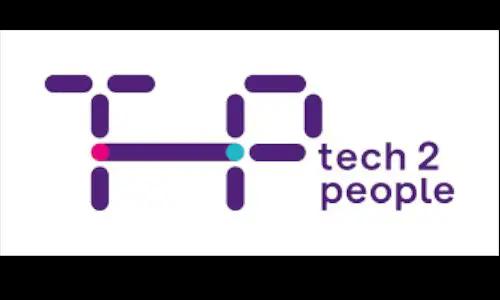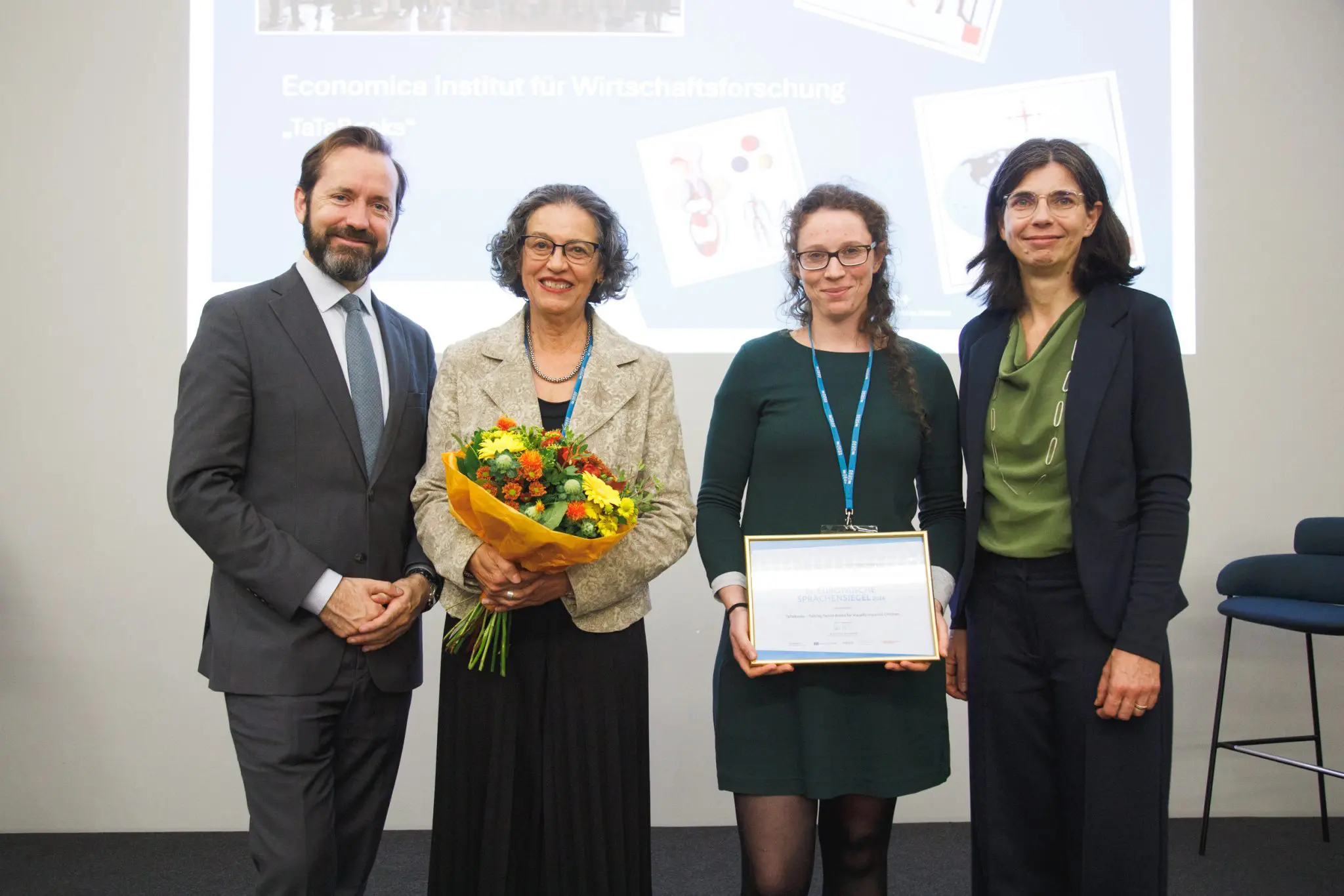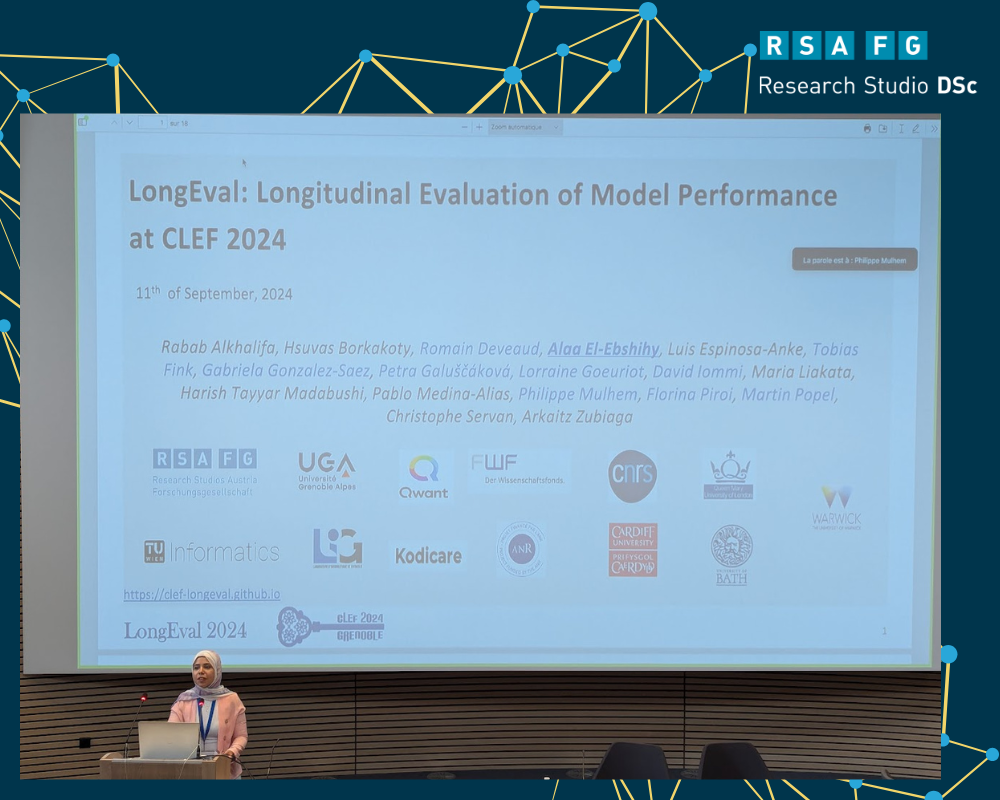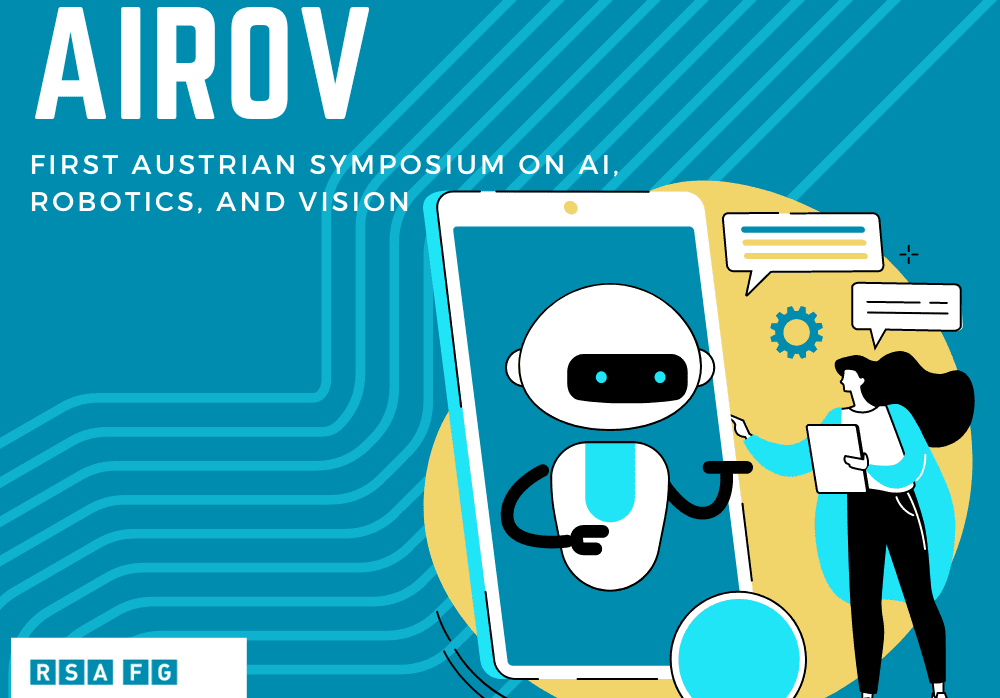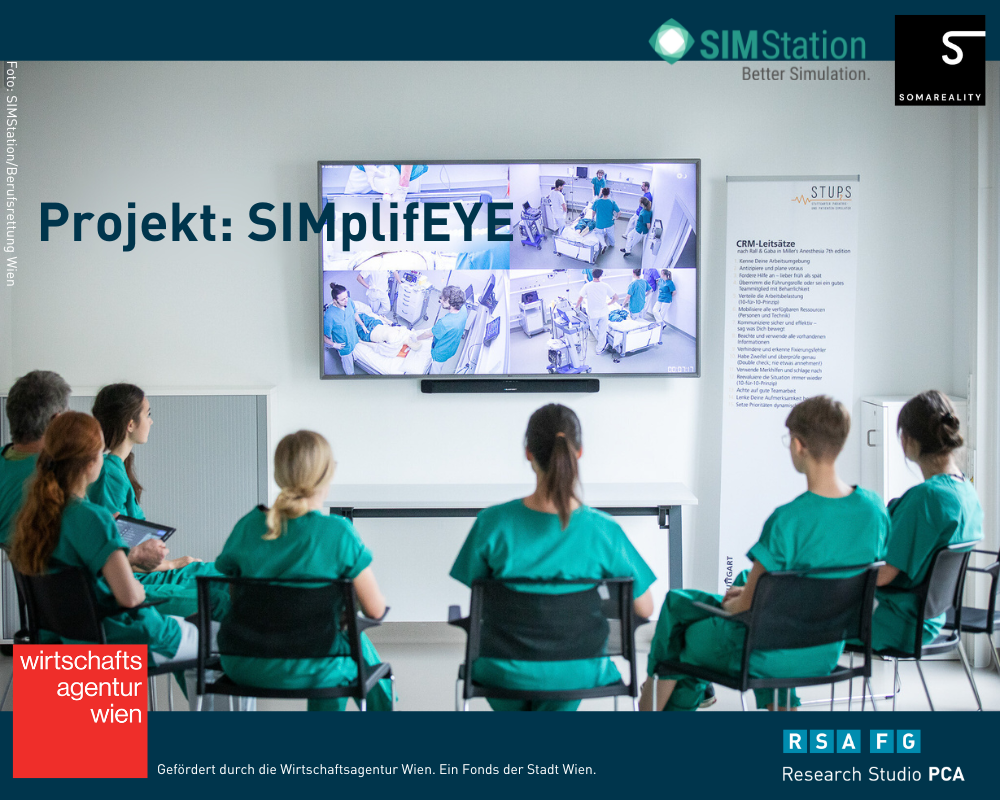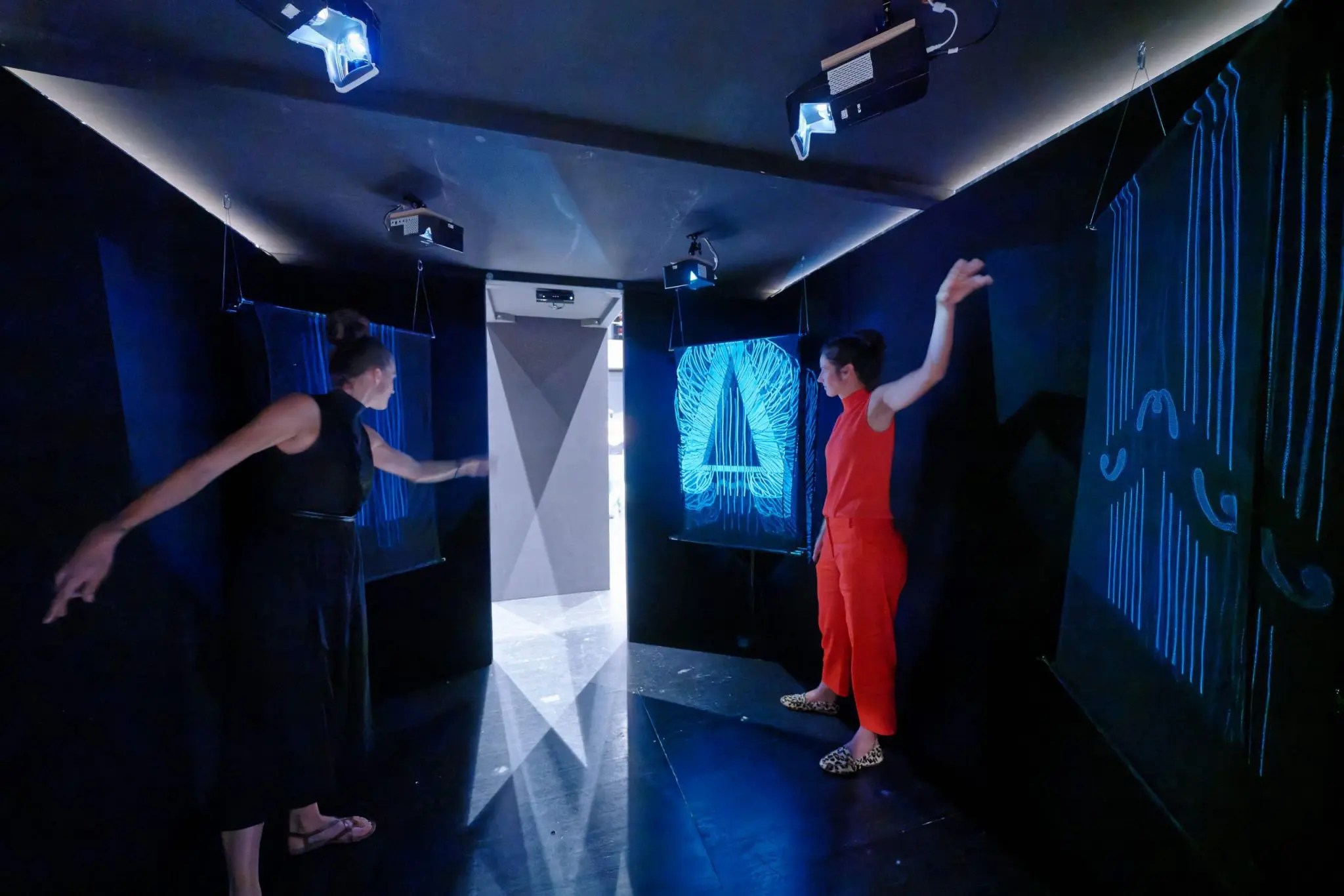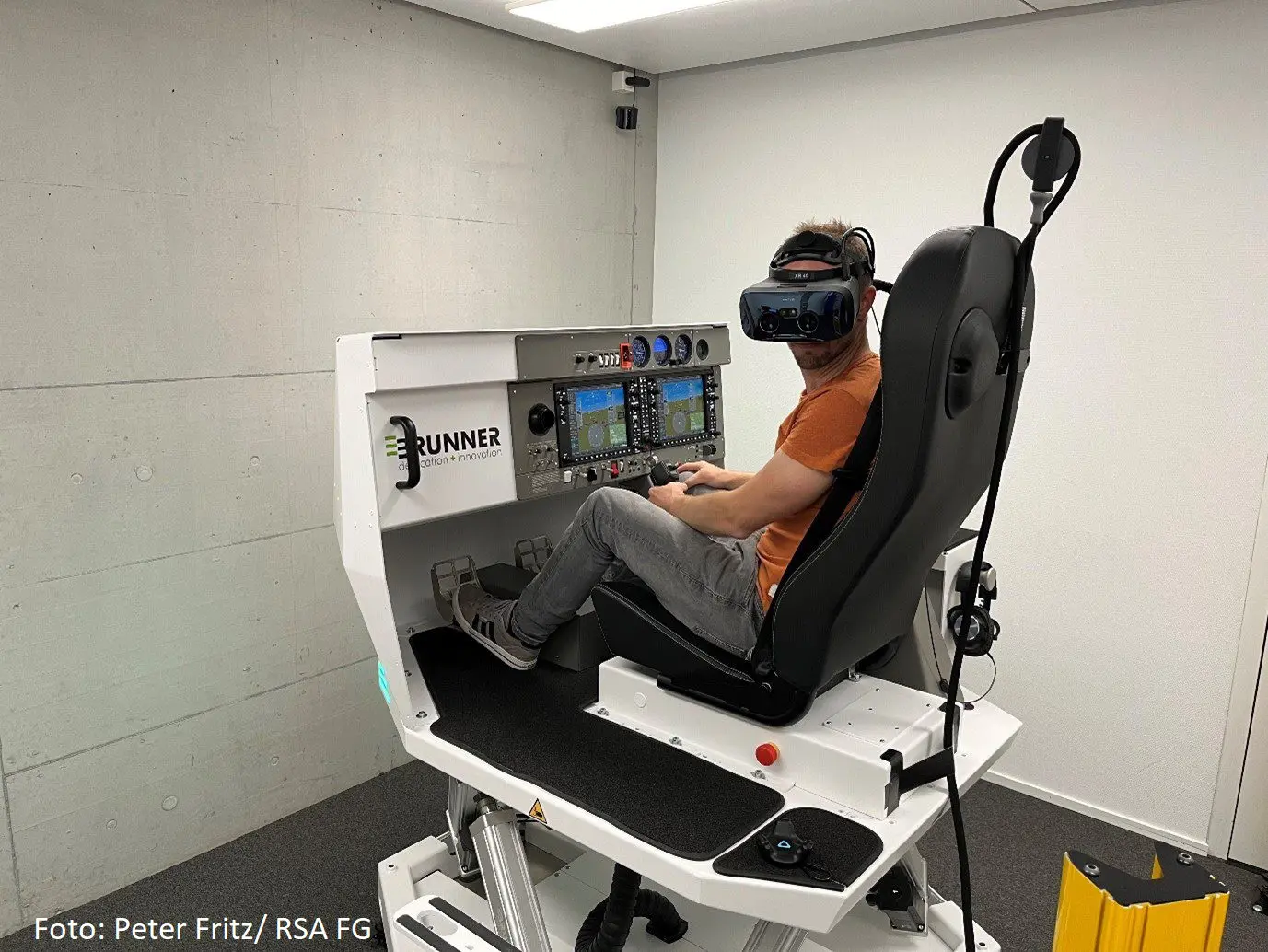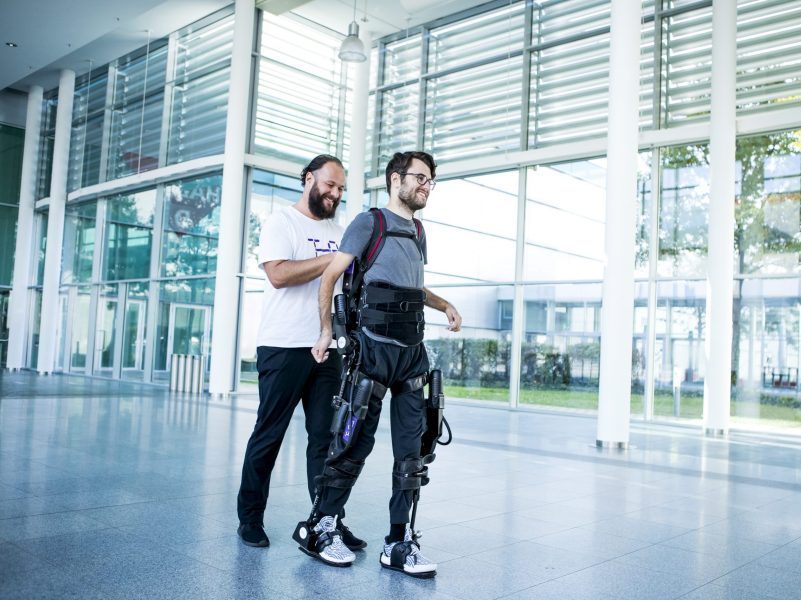GaitNext DSc
01.11.2019 – 31.03.2020
Exoskeletons offer a highly innovative form of therapy for people with paralysis
due to neurological diseases (e.g. paraplegia, multiple sclerosis,
stroke). The exoskeleton enables these people under guidance and participation
of a physiotherapist to walk independently again and thus to make a training and
Reactivation of the locomotor system and the entire organism. Due to the
technology, the analysis of therapies is still in its infancy.
possibilities.
The use of digital technologies provides high quality, high resolution,
highly complex data is available, which allows for much more detailed therapy analyses
which should allow not only a purely quantitative assessment of the range of movement,
but also a detailed description of the quality of movement – i.e. the approximation
to a healthy gait pattern.
The combination of different devices and data sets promises the possibility of
holistic interpretation of different physiological aspects of therapy through
respective sensor/actuator technologies. In concrete terms this means a combination and
Analysis of data from the following devices:
– Exoskeleton from EksoBionics
– Pulse oximeter, pulse, skin conductance via wearable wristband
– Muscle stimulation via EMG actuator
– Measurement of muscle activity via EMG sensor
– Accelerometer-based gait analysis (before and after analyses)
PROBLEM & CHALLENGE:
The question of feasibility to be addressed in this feasibility study is
Is it possible to combine the highly complex and highly modular data (different physiological
description forms, different devices, data formats, sampling rates),
to make them comparable and unite them into a holistic therapy analysis?
Translated with www.DeepL.com/Translator (free version)


